If the next Miata looks half as good as this concept, I can’t wait
Famously conceived as a modern take on classic British and Italian sports cars, the Mazda MX-5 Miata has long since outlasted and outsold them all, and it’s now a classic in its own right.
Mazda’s little roadster has touched the lives of countless enthusiasts over the last three decades, and I’m no exception. Buying a used ’97 NA was the first thing I did upon getting my first job as a designer in Fiat’s styling center. The last new car I bought was a ’17 ND I wish I never had to sell.
But with Miata sales having never truly recovered from the 2008 financial crisis, and the industry’s inexorable pivot towards electrification, the walls appear to be closing in on Mazda’s little roadster. Therefore, I pay close attention to whatever Mazda says or shows that has even the faintest connection to the Miata and its future. If that future looks half as good as the Iconic SP concept shown at the 2023 Japan Auto Show, I’m already looking forward to it.
In terms of concept and design language, the Iconic SP picks up right where 2022’s Vision Study Model left off, to the point that one could be forgiven for thinking it’s the same car. Not that it matters, because Mazda’s latest concept car is a true joy to behold.
It’s a refreshingly pure, honest, and straightforward design, one that reminds me of all the little red sports cars I used to sketch during dead times to brighten my mood and purge my soul after working on yet another Chinese crossover. But it’s executed with a degree of finesse that’s criminally rare these days. Observing how the light flows seamlessly on the Iconic SP’s clean, smooth surfaces leaves me no doubt this project has been a true labor of love for all involved.
Since they started with a clean sheet of paper and a very compact powertrain package, Mazda’s designers could give the Iconic SP killer proportions. The large-diameter wheels are pushed towards the corners of the car, stretching the wheelbase and reducing overhangs to a minimum. Those wheels sit under big, muscular fenders that flare out from the main volume of the car, giving the Iconic SP that sexy “Coke bottle” shape that any owner of a C3 Corvette knows and loves. In classic sports-car fashion, the cabin’s volume rests closer to the rear axle for a long hood and short rear deck.
On top of that, according to the figures released by Mazda, the Iconic SP is nearly three inches lower than the Miata but wider by four and a half. Such a wide track, plus large tires that sit flush with the arches and are emphasized by a body that cuts aggressively inward at its middle, contributes to the Iconic SP’s purposeful stance.
We’ve known since ancient Greece that beauty is a matter of proportions, and cars are no exception. Far too often, proportions is overlooked due to economic or technical constraints. If you nail the relationships of the vehicle’s foundational shapes, as Mazda’s designers definitely did here, the result can be magic.
Once the vehicle’s overall proportions are set, the second ingredient of a beautiful automobile is the sculpture: the complex interplay of the body’s various elements and surfaces. In the case of the Iconic SP and its surfacing, I’m delighted to report that Mazda’s designers knocked it out of the park.

The Iconic SP is a refreshingly pure design, almost devoid of character lines. Such a minimalist approach is nothing new in car design. Mercedes-Benz, for example, has been championing it for years, albeit with far less convincing results. But the Iconic SP is on another level: watching the light and the reflections flow over its muscular yet taut surfaces is a real pleasure.
The tension in the body’s curves, the crowning of the surfaces, and all the transitions appear perfectly judged. Without a doubt, that’s the result of clear design intent and painstaking refinement in the modeling studio by experienced eyes and hands.

Once designers have dealt with proportions and volumes, the last ingredients to consider are the so-called “graphic” elements. These are the windows’ contours, the cutouts for the headlights and taillights, the grilles and air intakes, and the shutlines between the various components.
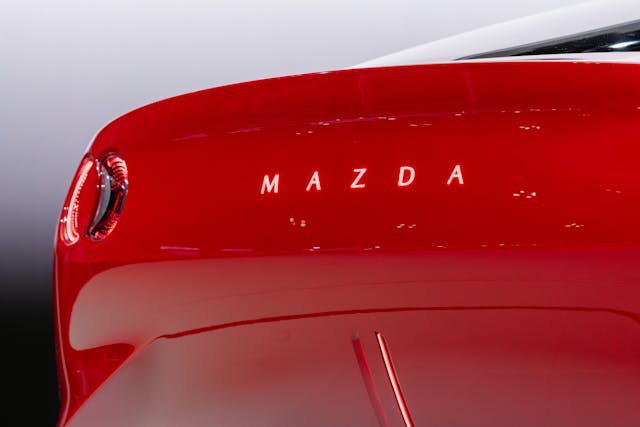
Given the Iconic SP is just a show car, Mazda’s designers could ensure these graphic elements stayed coherent with the pure, minimalist ethos of the design. The potentially unsightly bumper and boot lid shutlines are simply deleted. However, the gloss-black trim piece highlighting the windscreen frame is a playful indulgence, a hint to let us imagine how the Iconic SP would look as a convertible.
With its gorgeous curves and its reliance on proportions and sculpture rather than superfluous decoration, Mazda’s Iconic SP reminds me a lot of Italian design classics like the Cisitalia 202 or the Ferrari 250 SWB. I do not mean that Mazda’s latest concept car is in the same league as those classics; such a statement would be premature, if not blasphemous.
But what Mazda has delivered is a perfectly executed contemporary reinterpretation of all those classic red sports cars we have in our hearts. The Iconic SP doesn’t move the automobile design game forward by a single inch, and it doesn’t matter. All this concept is meant to do is look pretty, and it does so exceedingly well.

Mazda has emphatically confirmed that the Miata will remain part of its lineup for the foreseeable future, but the automaker remains tight-lipped about when the new generation will ultimately arrive. That’s understandable: There’s no real hurry to replace a model that has no real competition.
What Mazda is telling us with the Iconic SP is that, whenever it comes, the next Miata will surely bring the most significant change in the model’s basic formula since 1989. But, if what we’ve been shown in Tokyo is any real indication of what Mazda’s designers have in store for the next Miata, I’d better start saving up for my fifth Mazda roadster, regardless of what will power it.
Matteo Licata received his degree in Transportation Design from Turin’s IED (Istituto Europeo di Design) in 2006. He worked as an automobile designer for about a decade, including a stint in the then-Fiat Group’s Turin design studio, during which his proposal for the interior of the 2010–20 Alfa Romeo Giulietta was selected for production. He next joined Changan’s European design studio in Turin and then EDAG in Barcelona, Spain. Licata currently teaches automobile design history to the Transportation Design bachelor students of IAAD (Istituto di Arte Applicata e Design) in Turin.
***
Check out the Hagerty Media homepage so you don’t miss a single story, or better yet, bookmark it. To get our best stories delivered right to your inbox, subscribe to our newsletters.
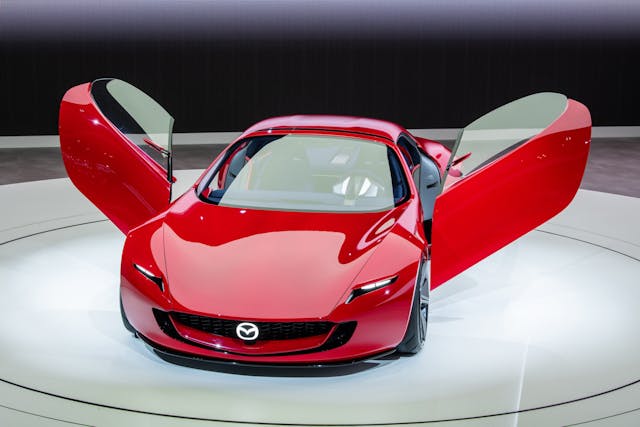



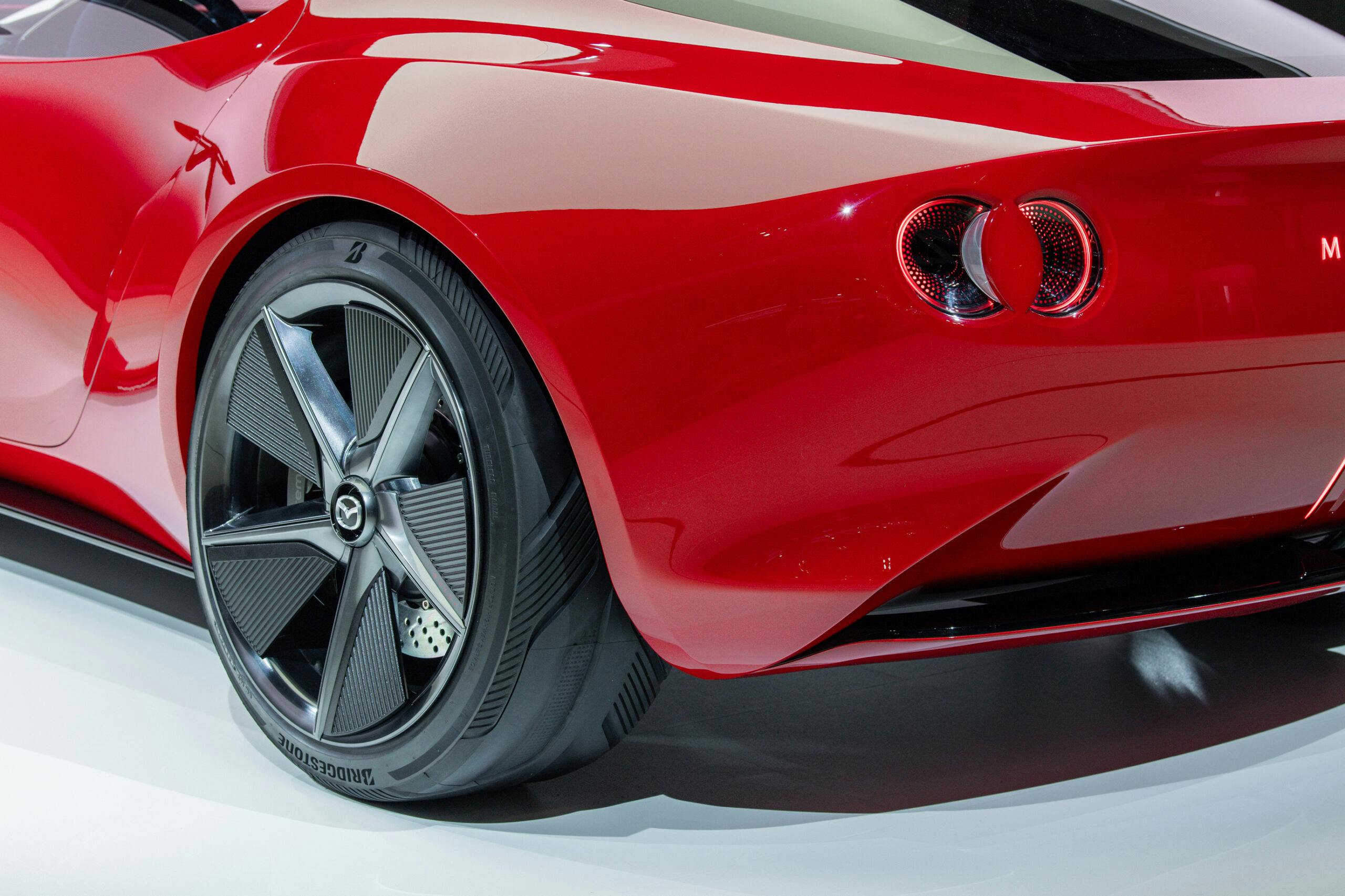
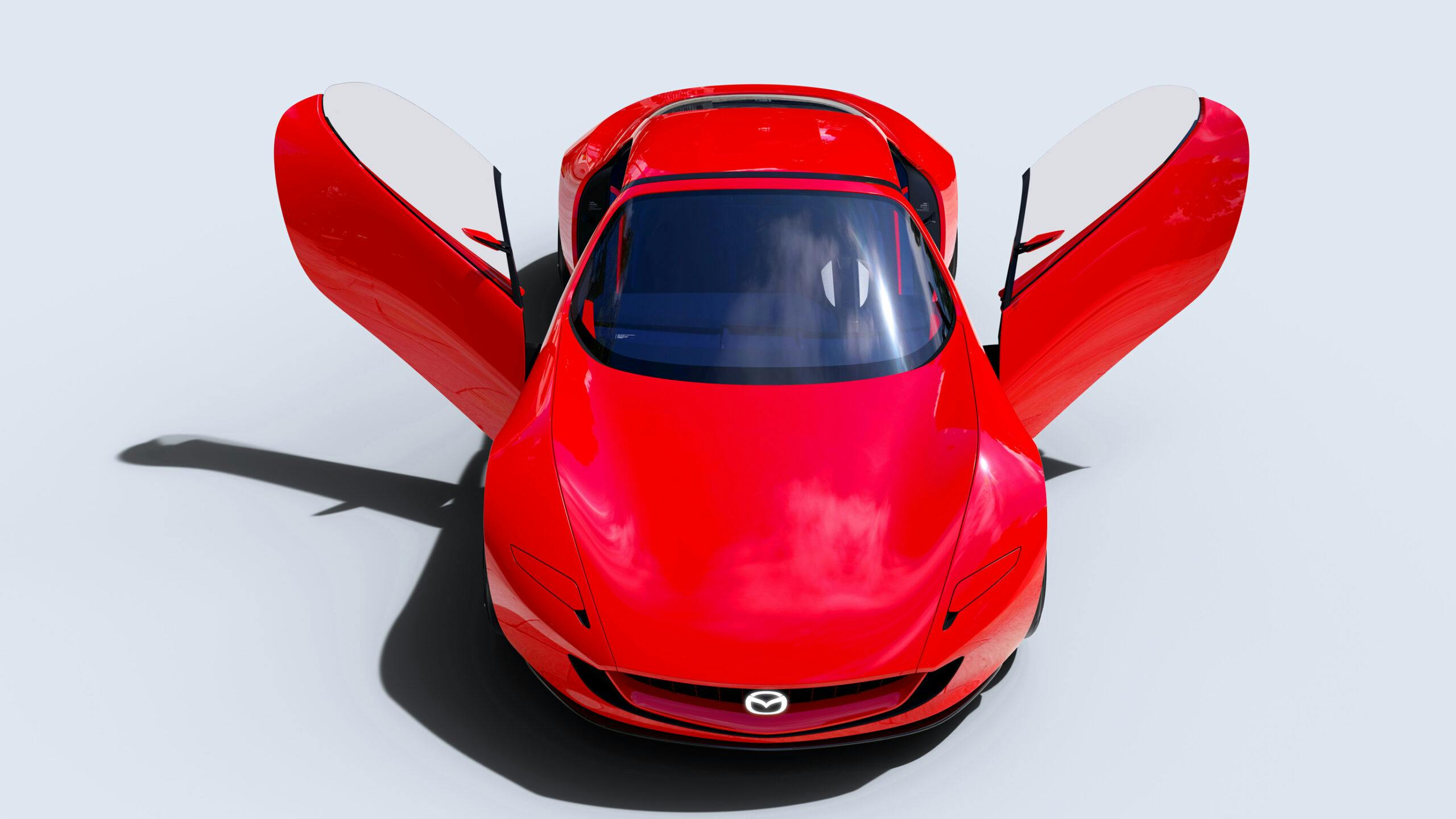
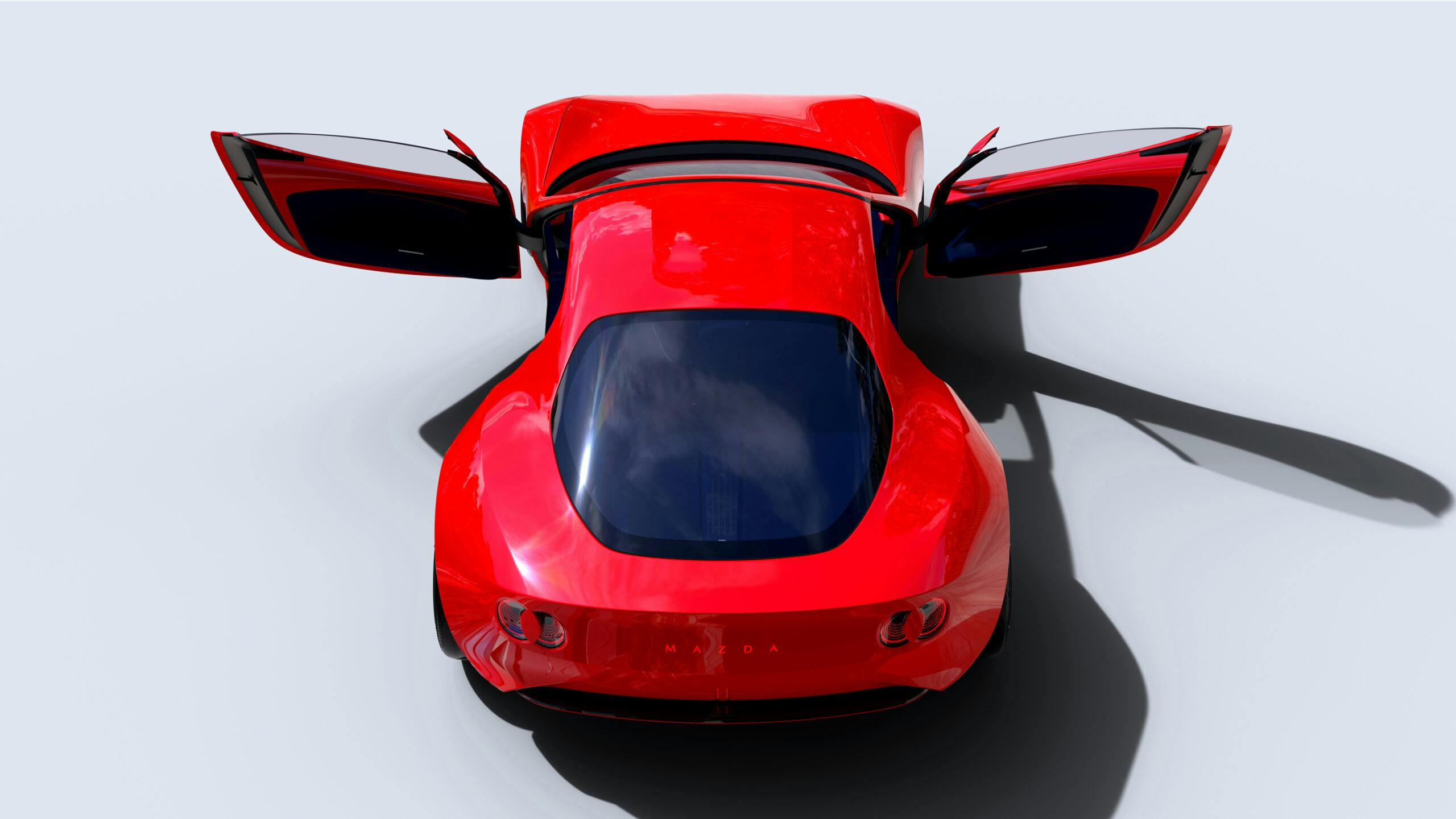
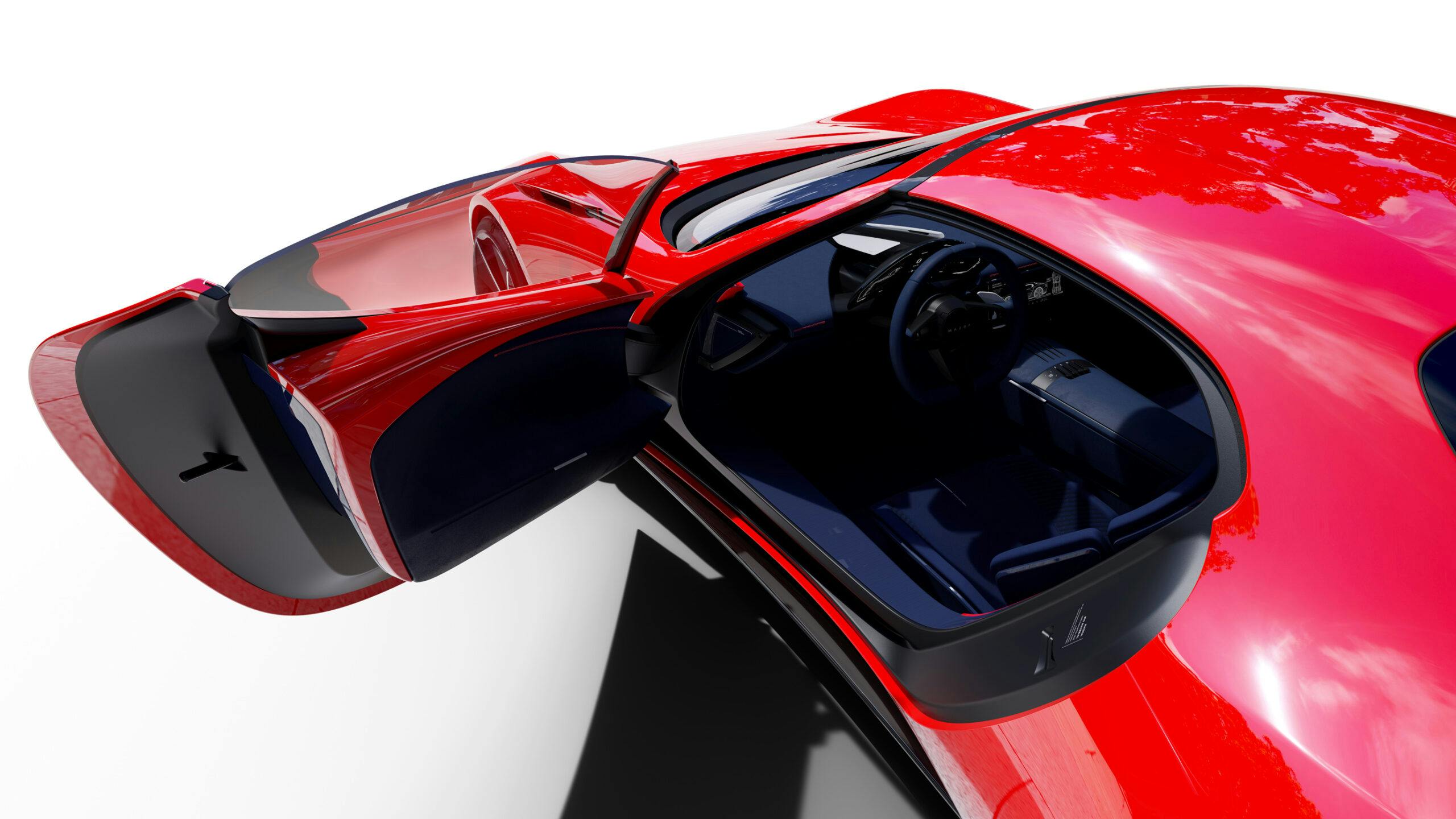
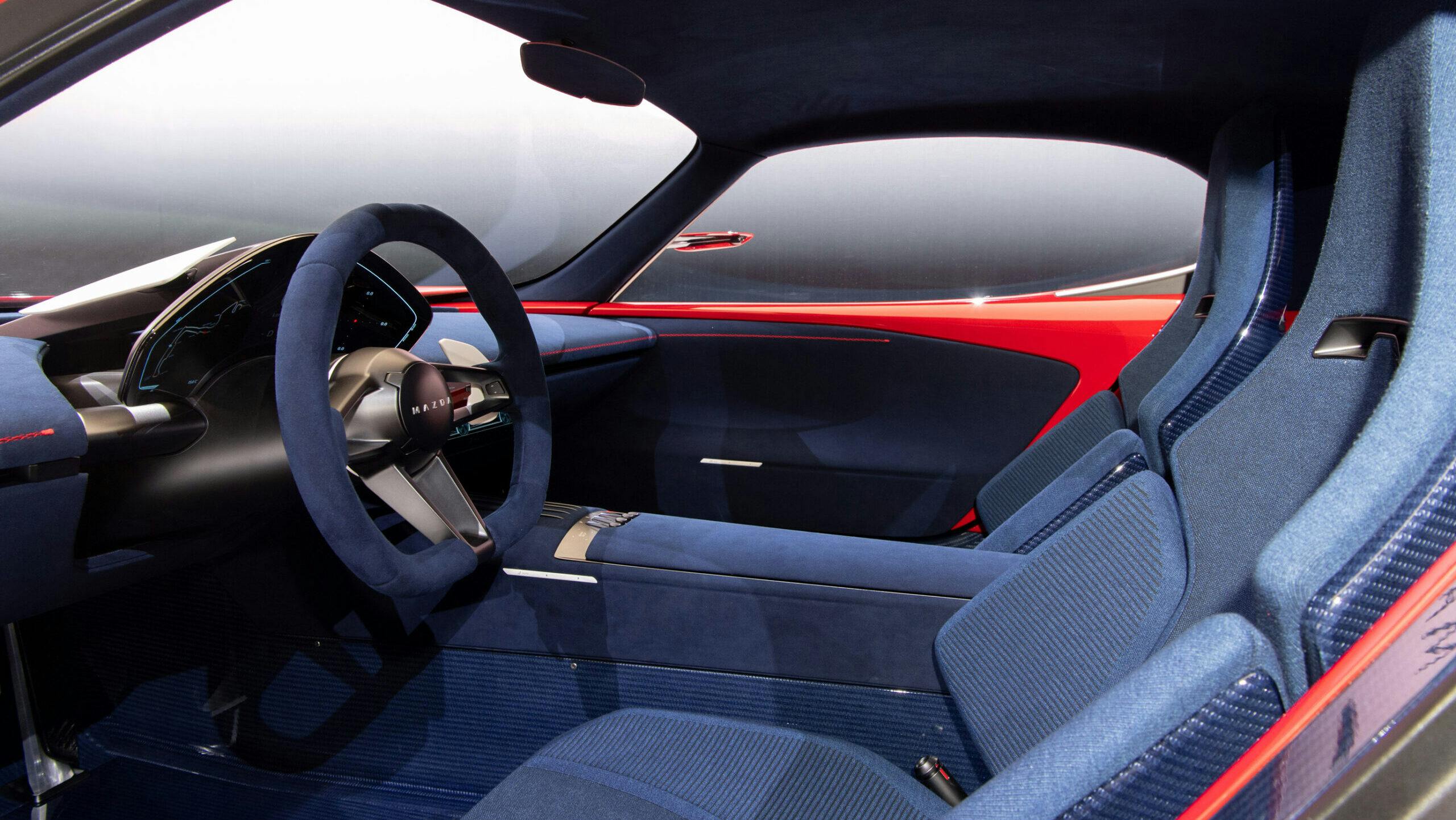
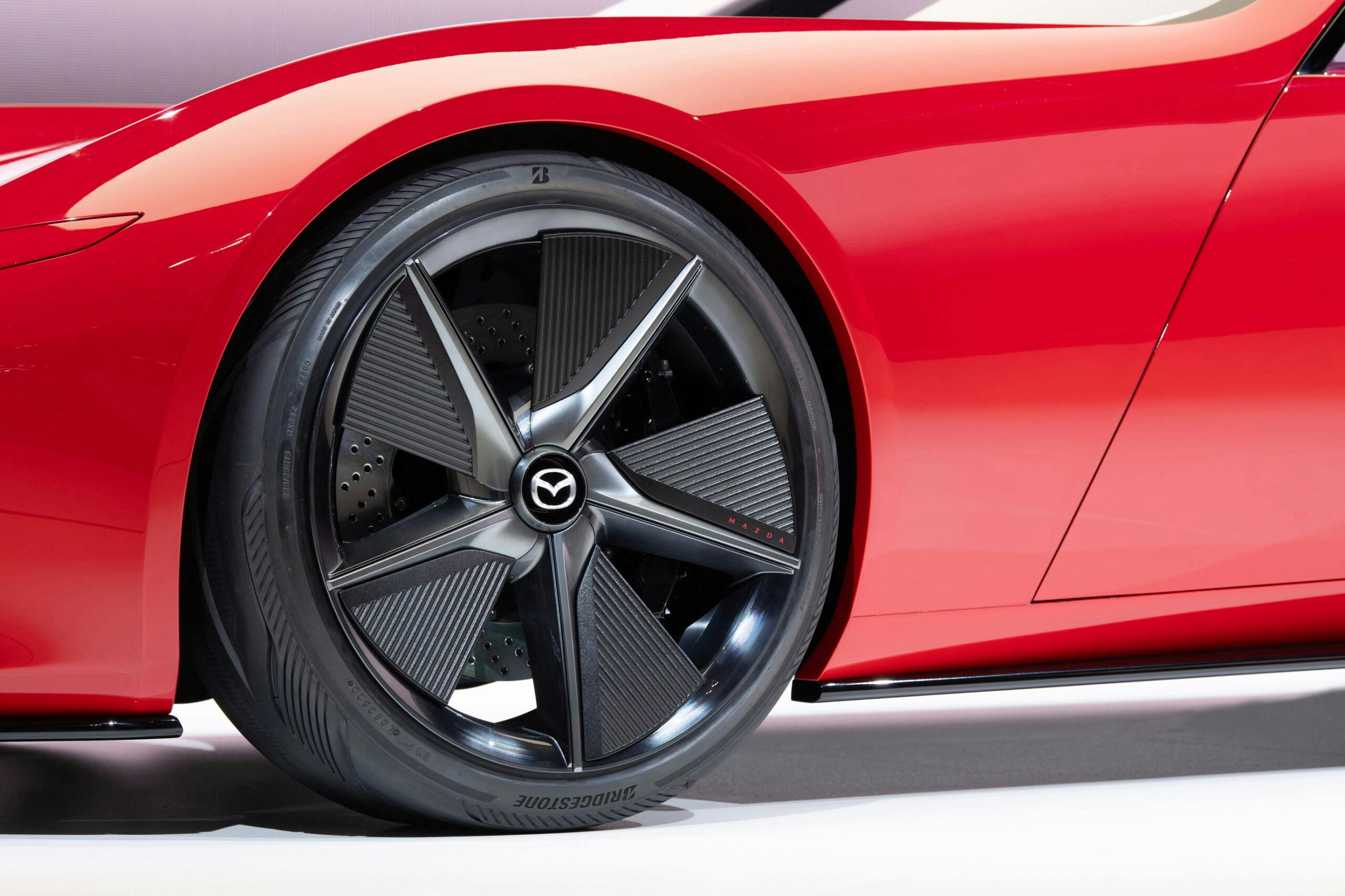
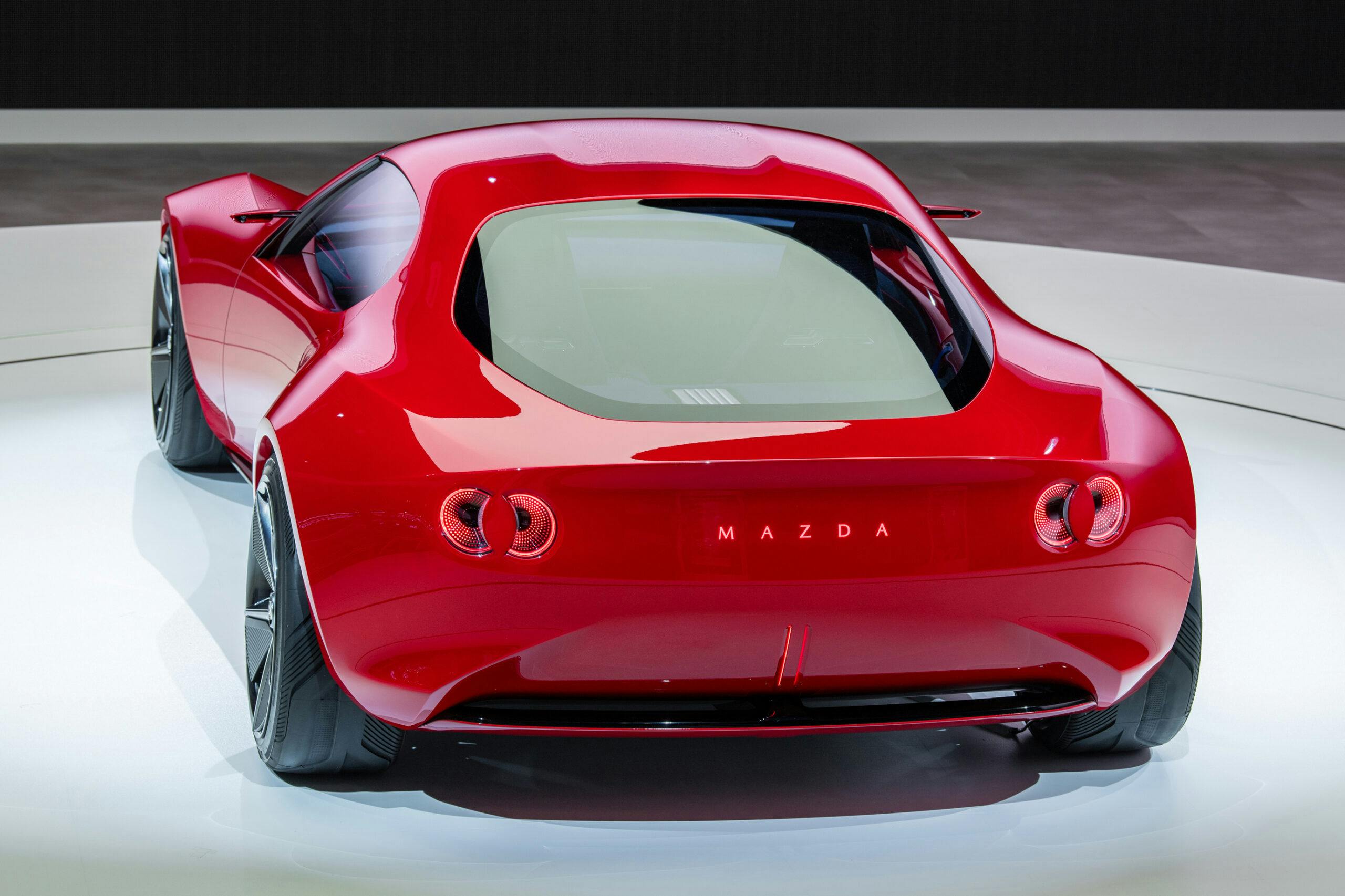
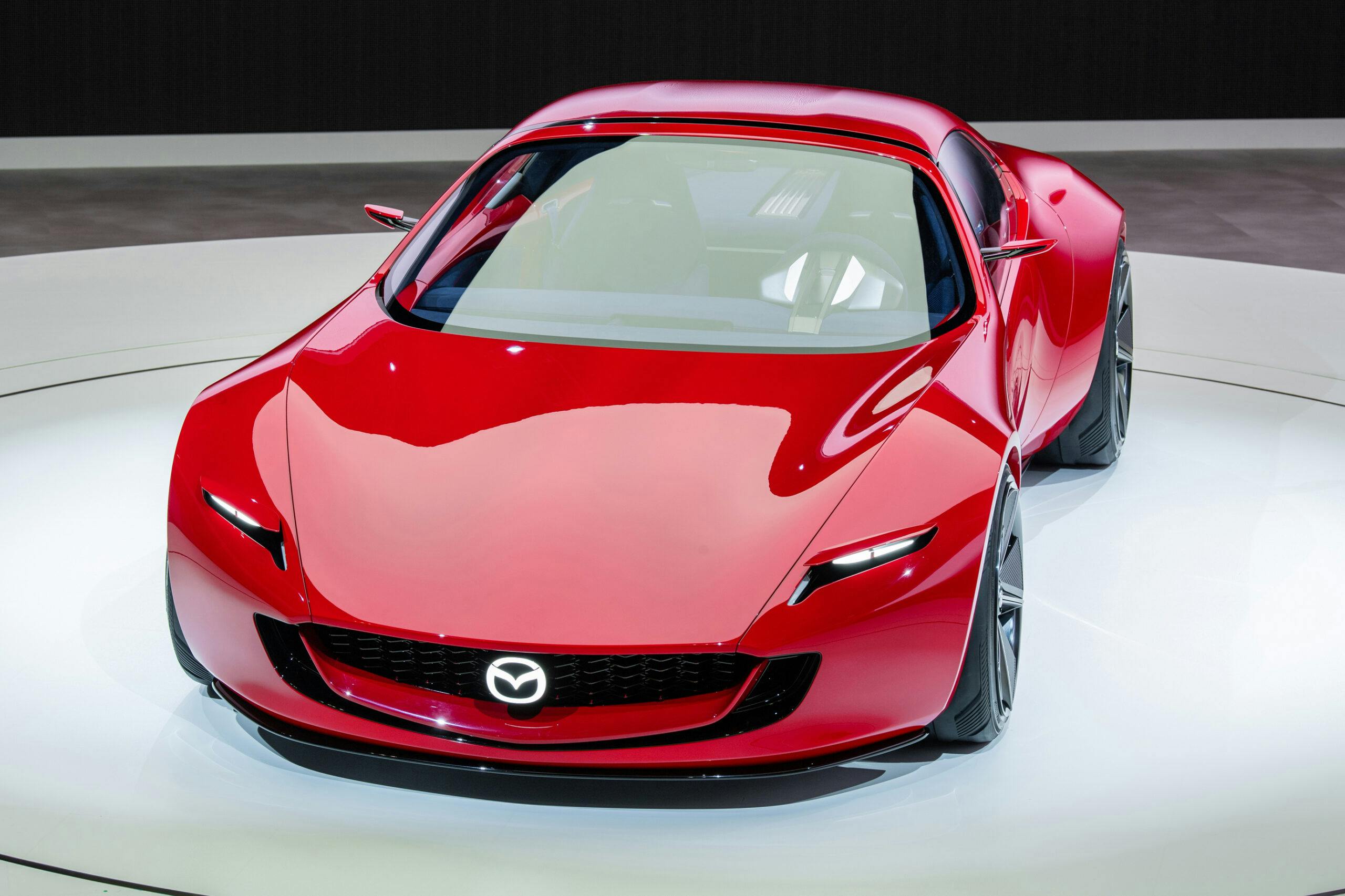


Are they making a convertible one?
If they make this and it’s 85% as good looking and it’s a bit bigger (like it’s supposed to be) I think I’d buy one.
I can’t fit into the current Miata comfortably but this could be my forever car.
This is only 4 inches shorter than the RX-7 (Pretty much every generation). It doesn’t need to be bigger. I’m pretty sure it’s not meant to be an RX-7 successor.
Have you tried an NC? I’m 6′ 1″ and 225lbs and have owned a 2007 from new.
The old Vette-ness of this is undeniable. That doesn’t bother me at all.
This is a great looking design. I hope it is realized in production.
No-nonsense and sleek. If I was only allowed a single word to describe what they have created: athletic.
This thing is gorgeous. I especially like the faux convertible cutline across the windshield header. It’s a neat detail. My only quibbles with the design are the lazy side glass shape and the weird taillights. Fix those and give it a drivetrain with a real manual and I could very well change my current fun car plans. (Fun car = track car. I don’t want an electric for that yet.)
The tail lights are a nod to the original miata, (not my favorite design) but I’m sure there are some who like it, it’s definitely not the worse design I’ve seen recently
Much will change as this car would not fair well in the streets.
It sits too low. I know I have a C5 at stock height that scraps now. The quarters stick out so much nothing but stone chips.
The doors will likely not make crash testing.
Overall I like it better than the present car.
The real problem can they make a case to build it at the low volumes it will see? The last Miata nearly did not make the cut till Fiat came on board.
Mmmmmm…………yes
One of those cars where if they can manage to keep it like the prototype, it will be a hit. Sports cars sell largely on their appearance and RWD. Just ask Lexus who is notorious for underperforming sports cars that somehow still sell in solid numbers (they’re beautiful, that’s why).
Now THAT is a truly beautiful sports coupe. I applaud Mazda for staying true to the ethos. Now let’s see if they carry it through to production with a minimum of compromise. I would seriously consider buying one.
Too much about this concept is fantasy to ever make it to production. That hood/bumper? Too low profile to meet pedestrian crash safety. Mirrors? Basically tongue depressors. And yeah, it’s swoopy and curvy, but good luck seeing out of it. Can’t help but think it’ll fall in line with the BRZ/GT86 and the new Z, which is to say, claustrophobic for anyone over 5′ 10″. And let’s not even get started with the power plant. A rotary hybrid? Yeah, right. All the worst parts of each individual power plant element, none of the best.
yeah. a rotary? didn’t they learn the first time?
This could make a great coupe with that turbo straight 6 they have in their lineup.
I’m still loving my 2002 NB. There’s no question this model is impressive and beautiful, but some of us are getting older and the thought of an even lower Miata, with a hard top, just makes me laugh. And 4″ wider? Seriously, these flowing body panels alone are a nightmare of maintenance (imagine repainting a black one after some minor fender bender). Miatas aren’t driveway jewelry, they are meant to be driven, and there’s no way I’d drive this one around San Francisco.
Let this be its own car, the Miata small, basic, light, no roof formula is working just fine, leave it alone.